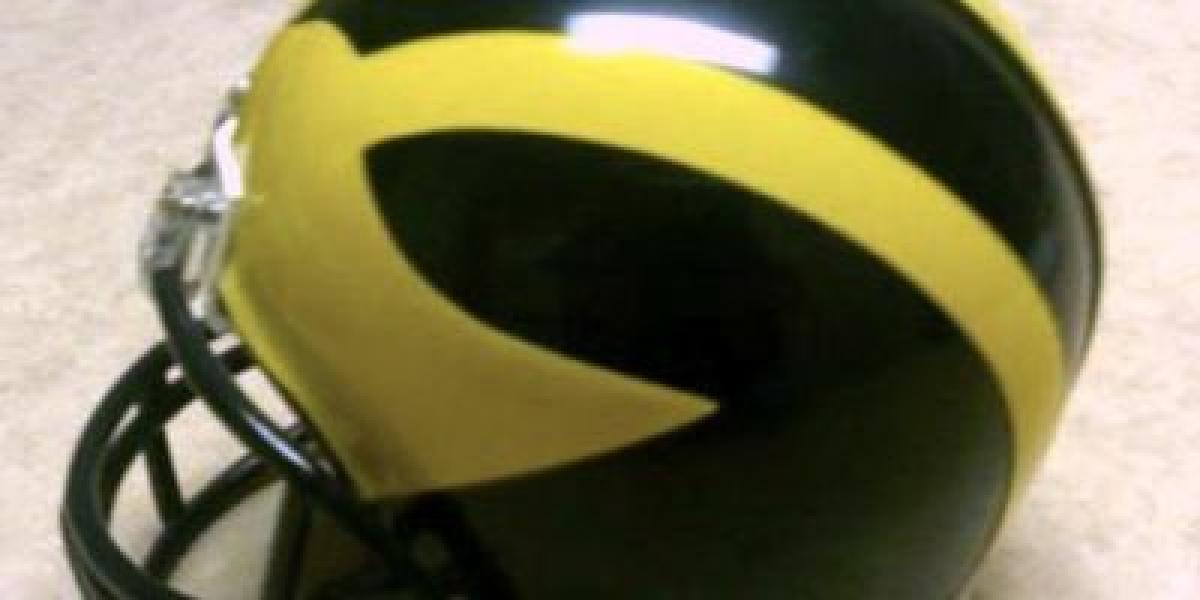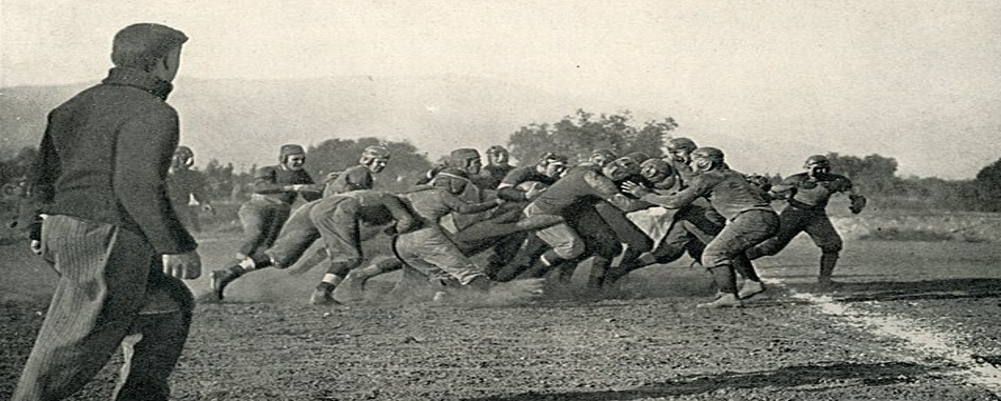From Leather Cranium Covers to Space-Age Protection: A Historical Odyssey Through College Football Helmets
Today's college football players charge down the field adorned in futuristic helmets, marvels of modern engineering designed to absorb impact and mitigate injuries. But rewind the clock a century, and you'd find players taking the field with little more than glorified leather skullcaps. This series delves into the fascinating evolution of college football helmets and head gear, a journey that mirrors not just the changing safety standards of the sport, but also its cultural and technological advancements.
Our exploration begins in the rough and tumble early days of the sport. In the late 19th century, as American football diverged from rugby, players wore minimal protection, if any. Improvised headgear might consist of leather caps or padded headbands, offering scant defense against the brutality of the game. The first documented use of a helmet came in 1869, when George “Rose” Barclay, a Lafayette College halfback, donned a contraption of straps and earpieces – a far cry from the sophisticated equipment we see today.
Love the helmet designs and evolution wait till you check out the helmet numbers history.
As the game gained popularity and the dangers became more apparent, the concept of a protective helmet slowly gained traction. The early 20th century saw a shift towards leather helmets, offering a rudimentary level of padding. These helmets, often adorned with the player's number or team initials, were a far cry from comfortable, but they marked a crucial step towards prioritizing player safety.
The 1930s and 40s witnessed a period of experimentation. Plastic helmets began to emerge, offering improved shock absorption compared to leather. Face masks, initially cumbersome and unpopular, gradually gained acceptance as their protective benefits became undeniable. World War II, with its advancements in materials science, also indirectly influenced helmet design. Lighter, stronger materials became available, paving the way for a new generation of headgear.
The post-war era saw a continued focus on safety and comfort. Manufacturers introduced new padding materials like vinyl nitrile, offering better impact distribution. Face masks evolved, becoming more streamlined and offering better visibility. The 1960s and 70s ushered in a period of aesthetic flourishes. Helmets became canvases for team logos, stripes, and vibrant colors, reflecting the growing emphasis on college football as a form of entertainment.
The latter half of the 20th century and the early 21st century witnessed a renewed emphasis on safety in response to growing concerns about head injuries. Helmets underwent significant changes, incorporating features like multi-layered padding systems and improved suspension mechanisms to reduce concussions. Research and development continued at a rapid pace, with materials science playing a pivotal role. Space-age materials like polycarbonate shells and impact-absorbing foams became commonplace.
This series won't just delve into the technical aspects of helmet evolution. We'll explore the cultural significance of these protective shells. Helmets became a symbol of team identity, a canvas for showcasing school pride and fierce rivalries. We'll also examine the ongoing debate surrounding head injuries and the constant quest for safer equipment.
American football uniforms and helmets have undergone a remarkable transformation since the early days of the sport. Initially, players wore simple leather helmets with minimal padding and no face masks, offering little protection.
Jerseys were often made of cotton and featured basic block numbers, while draw strings were used to secure the waist. As the game evolved, so did the equipment. The introduction of plastic helmets in the mid-20th century marked a significant advancement in player safety. Face masks became standard, providing crucial protection for the face and eyes. Helmets also began to feature team logos and helmet decals, adding a sense of team identity. Uniforms evolved as well, with the introduction of home and away jerseys, as well as alternate designs.
Knee pads and other protective gear became more sophisticated, further enhancing player safety. Today, advancements in technology have led to the development of high-tech helmets with improved impact absorption and communication systems. Some teams even embrace their history by occasionally sporting throwback uniforms, paying homage to the iconic styles of the past. From the basic gear of yesteryear to the cutting-edge equipment of today, the evolution of football helmets and uniforms reflects the sport's ongoing commitment to player safety and its rich and storied history.
Join us as we embark on this historical odyssey, exploring the fascinating world of college football helmets. From the rudimentary leather contraptions of the early days to the high-tech marvels of today, we'll uncover the stories behind the headgear, the innovations that shaped them, and the ongoing pursuit of protecting the athletes who wear them. So, strap on your metaphorical helmet (of knowledge, of course) and get ready for a thrilling journey through the gridiron's past, present, and future.



